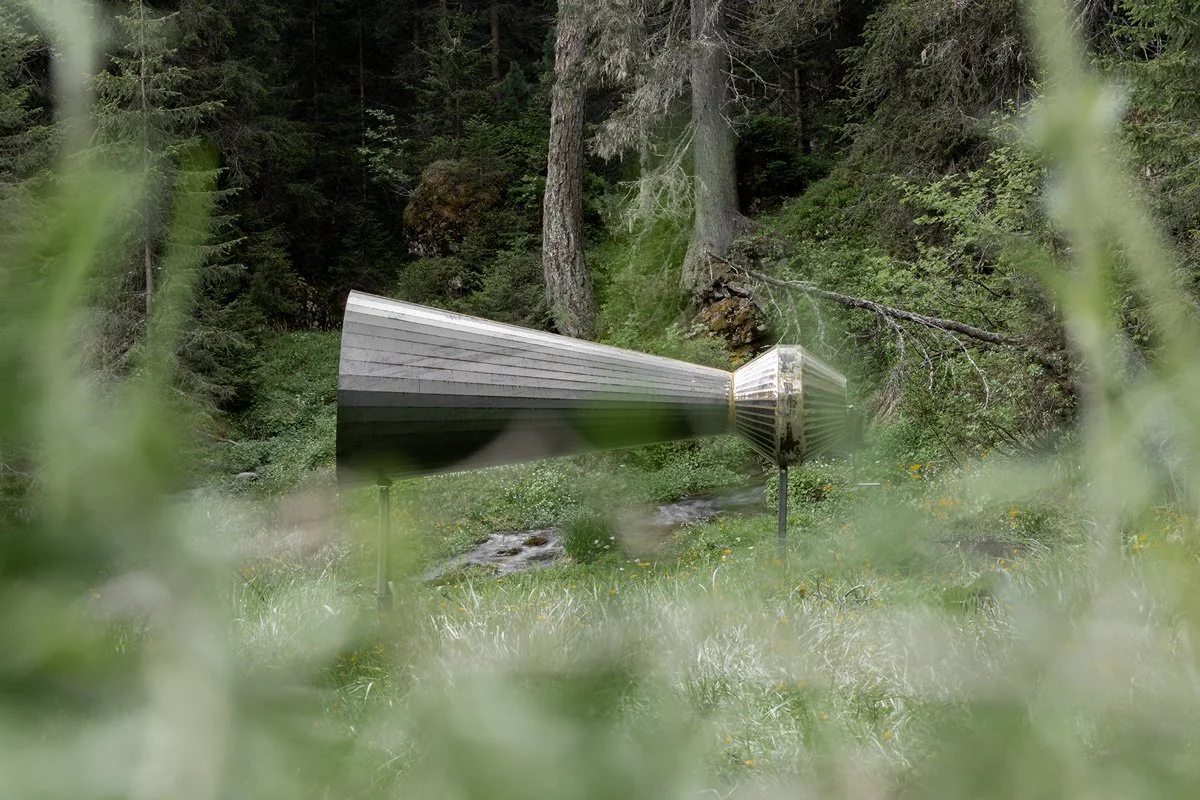Cu X
Luca Rossi
A strange, oblong, futuristic object has laxnded at “Lech dla Lunch”, perhaps poised for departure. Its logo is stamped on the shiny white surface. “CU X” plays on the name of the multibillionaire’s private space company, which dreams of interplanetary life and fills the stratosphere with satellites, and also on the phonetic similarity to IQ, the human intelligence quotient—another fixation of the aforementioned billionaire. Irony aside, the serious metaphor carried by the artwork compels reflection on humanity’s attempts to overcome its limits, risking failure, paradox, and contradiction. Throughout this, both the silhouette and the title refer to the whetstone, the sharpening tool for a scythe blade—a totemic object for the 2025 edition of the SMACH Biennale. The works exhibited explore the relationship and typical contradictions our species has with technology and innovations.







Exhibit place Lech dla Lunch
At Lunch Lake (Lêch Dlà Lunch in Ladin) there is not much to say, except that it is a forest lake officially listed in the Register of Natural Monuments of the Province of Bolzano under the code 001_G 01. It therefore occupies the very first position in the list, which extends over another 278 pages and presents more than 1,000 sites and protected areas together with their legal foundations. As defined on the Province’s website: “Natural monuments include individual trees, springs, waterfalls, streams, alpine lakes, rock and ice formations, caves, mineral and fossil deposits, and geological outcrops, which, due to their particularity or rarity, their ability to give the landscape a distinctive character, or their ecological, hydrological, or geological uniqueness, are to be preserved in the public interest.”
Another detail we can mention is that near the lake there is the “Cialciara,” a cylindrical stone structure once used to “burn” stones in order to produce lime. Inside the structure, a domed furnace, also made of stone, was constructed. Above the dome, limestone (including dolomite) was stacked up to the top. The pile was then covered with brushwood and straw and sealed with a layer of clay about ten centimeters thick. The kiln was then lit and kept burning with wood for three days and nights: the firing process required about 120 cubic meters of seasoned wood. After the combustion was complete, the lime produced was partly stored for later use and partly slaked in pits filled with water.
Lime is a highly versatile binder that has been used in construction for various purposes since antiquity. From prehistory through ancient Egypt and up to the Romans, this material was widely employed both for building and for decorative purposes.












